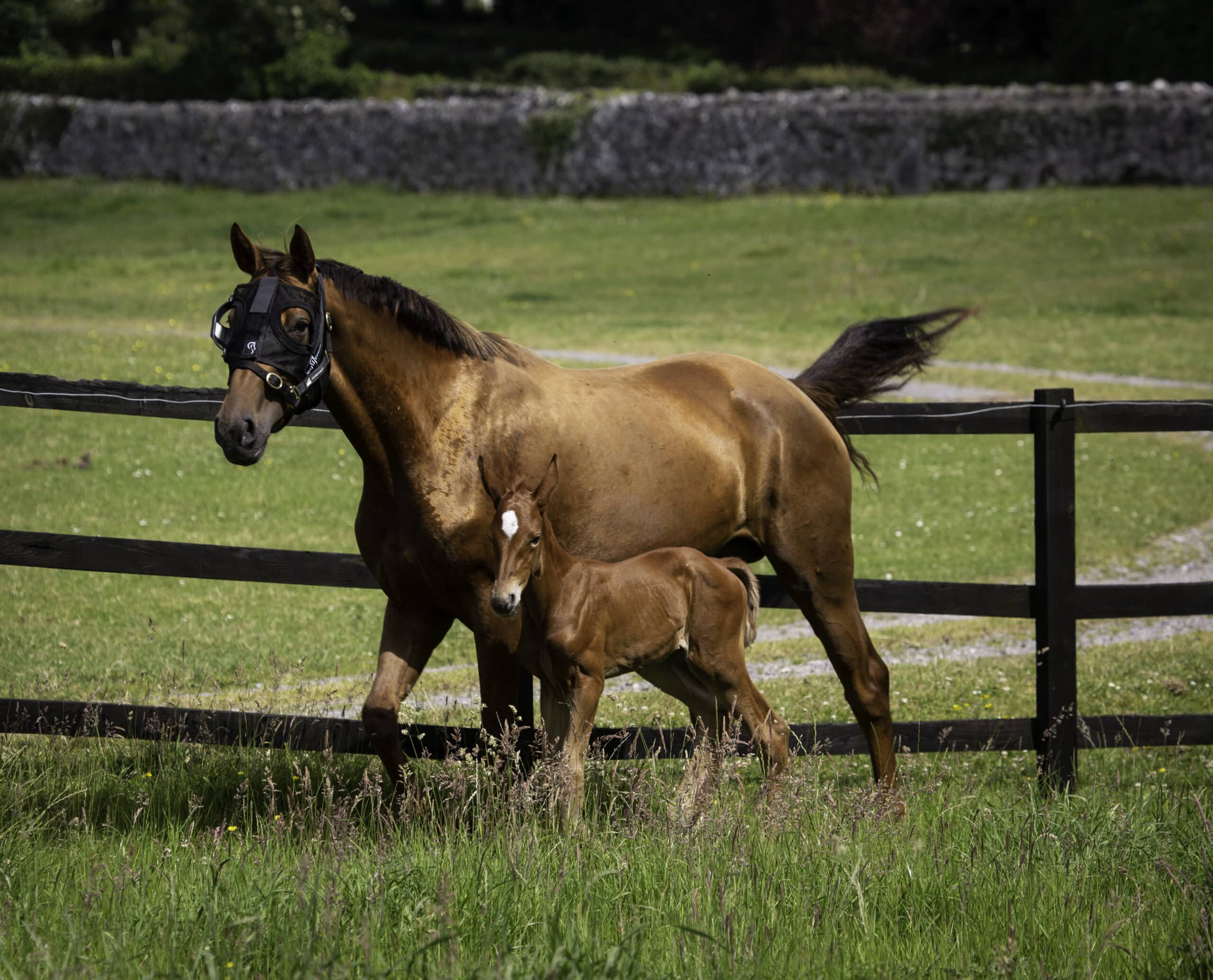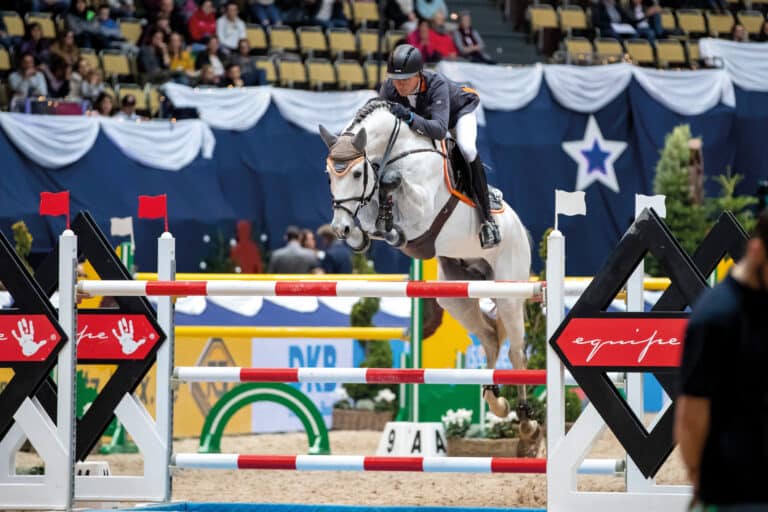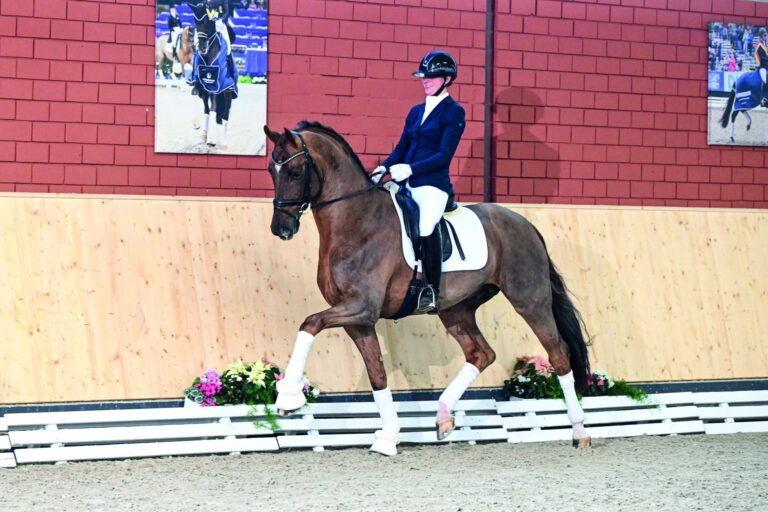For successful breeding outcomes, timing is key, as mares are seasonal breeders. The naturally lengthening days of spring suppress melatonin and, in turn, stimulate reproductive hormones that allow mares to commence cycling. Published scientific studies have confirmed that extended day length for non-pregnant mares advances the reproductive season. Timely conceptions mean reduced workload, more cycles for embryo transfer, potentially less disruption to competition schedules, and increased chances of success using valuable semen.
Extended daylight has been used for decades with dry mares, but it also offers many benefits for pregnant mares.
Transforming pregnant mare care with extended daylight
Natural light exposure is a major factor in maintaining a stress-free environment for your mare, playing a significant role in the reproductive cycle. Extended daylight hours stimulate the production of reproductive and growth hormones, supporting the health of both mare and foal. This is essential for maintaining a healthy pregnancy, proper foal development in utero, and improving milk production and colostrum quality. Maintaining consistent long daylight periods can be difficult during the reproductive cycle, which is where extended daylight therapy helps—supporting both reproduction and your mare’s overall health.

Backed by research
Research has shown that mares exposed to blue light technology during the final 100 days of gestation experience major benefits for both mare and foal. Presented at the Equine Symposium of the British Society for Animal Science’s Conference, one study showed that pregnant mares wearing blue light masks in the last 100 days of gestation had shorter pregnancies, ovulated sooner after foaling, and produced stronger foals.
Conducted by the University of Veterinary Medicine in Vienna, Austria, the study found that foals from mares using light masks were 15 minutes faster to stand after birth compared to foals from mares without additional light exposure. Over two years at the Brandenburg State Stud in Germany, the study also showed that blue-light-stimulated mares developed larger follicles in late gestation and could be bred sooner post-foaling. Their foals also had shorter hair coats, indicating that light perceived by the pregnant mare influences foetal physical development in utero.
Nature intended for pregnant mares to foal during spring. However, breeding mares earlier in the year means they now often foal at darker times of the year than they would in the wild. This shift has led to negative consequences such as longer gestation lengths, smaller foals, and reduced post-foaling fertility. In addition to stimulating reproductive hormones, Long Day photoperiods also stimulate important growth hormones, helping foals mature in utero, enabling mares to produce adequate milk and colostrum, and ensuring mares are cycling and ready for rebreeding post-foaling.
When and why to use extended daylight therapy on dry mares, pregnant mares, and stallions
For Non-Pregnant Mares (Dry and Maiden):
To achieve earlier ovulations, increased fertility, and regulated estrous cycles, blue light treatment should begin approximately 70 days before the desired breeding date. For the Thoroughbred industry in the Southern Hemisphere, this aligns with mid to late June.
For Stallions:
It is recommended that long-day light therapy begins 75 days before peak reproductive activity. This advances and extends the stallion’s optimum fertility period, in addition to delivering numerous health and well-being benefits. Although stallions can breed year-round, fertility peaks during the longest days of the year. Studies show that semen volume, sperm concentration, libido, and reproductive behaviour all improve with longer light exposure.
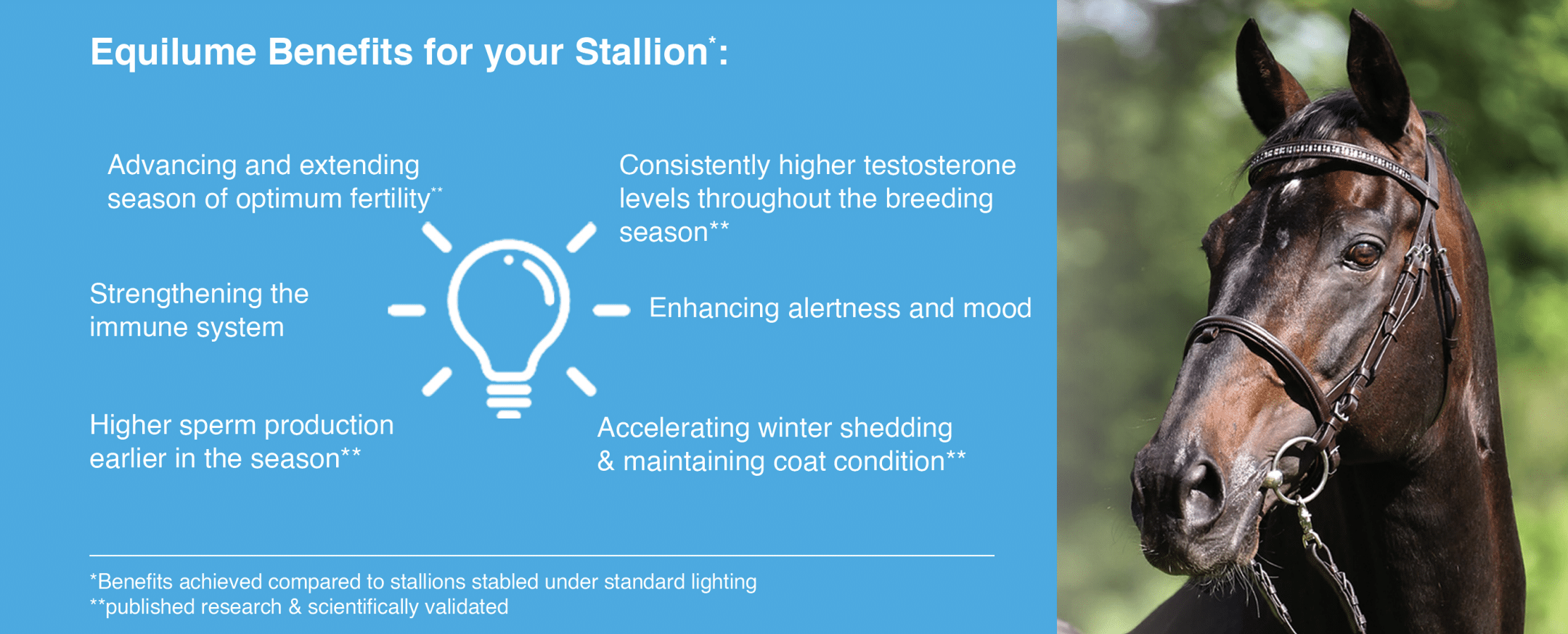
For Pregnant Mares:
Blue light treatment should start approximately 90–100 days before the foaling due date. However, regardless of the due date, light therapy should not commence before June 1st in the Southern Hemisphere. Natural light exposure is key to maintaining a stress-free environment and plays a crucial role in the reproductive cycle. Extended daylight supports hormone production, pregnancy maintenance, in-utero foal development, and enhanced milk and colostrum production.
Which light source should I use?
While the start date of extended daylight therapy is important, the quality and duration of light exposure are equally critical in achieving fertility benefits for mares and stallions.
Duration of Light:
Horses are long-day breeders, with their natural reproductive period occurring during the light-filled days of summer. A typical summer’s day includes about 16 hours of light and 8 hours of darkness (a Long Day). The transition from Short Day to Long Day stimulates early reproductive activity and ovulation in mares.
Quality of Light:

Natural daylight spans the visible light spectrum, with blue wavelengths being particularly abundant. Horses, like humans, have eye receptors sensitive to blue light, distinct from the rods and cones used for vision. These receptors communicate with the biological clock, which regulates vital functions such as alertness, metabolism, immune function, muscle and cardiovascular performance, and cellular regeneration.
Not all lights are equals
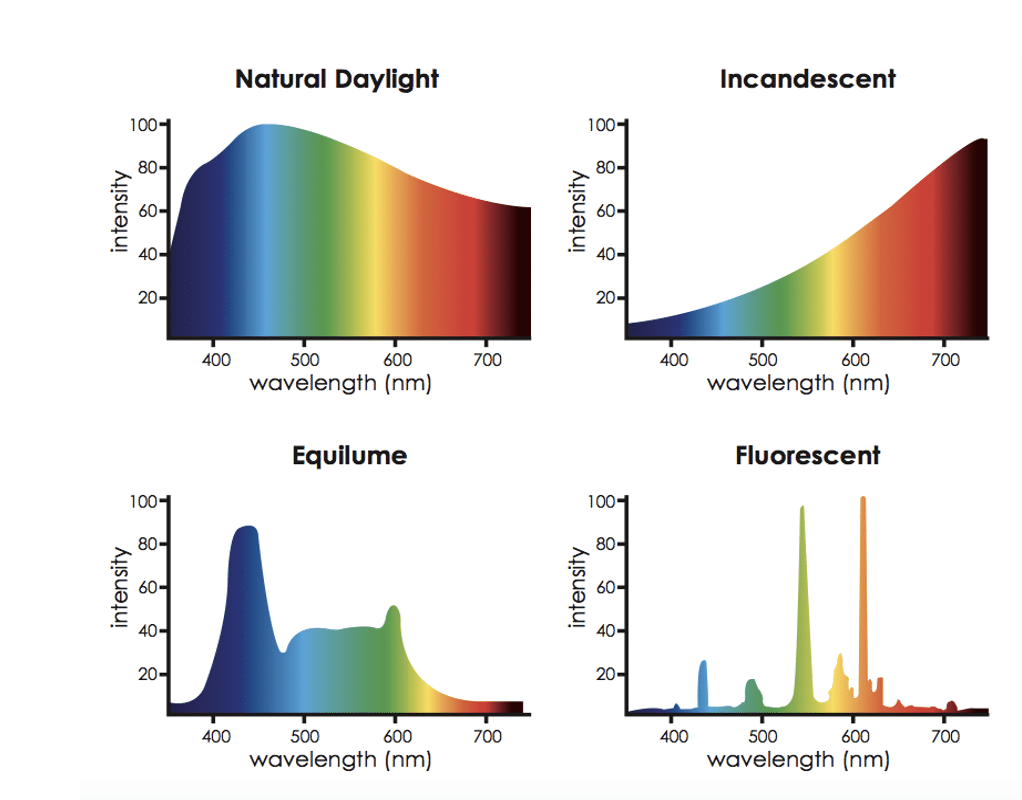
Standard indoor lighting often fails to meet the body’s needs. To support optimal biological rhythms, lighting systems should mimic natural light as closely as possible:
- Provide high levels of blue wavelength light during the day.
- Allow gradual transitions from dark to light (at dawn) and light to dark (at dusk).
- Avoid white light pollution at night to prevent overstimulation of light-sensitive receptors.
- Use programmable systems to replicate seasonal changes in day length.
Daily extended daylight can also be achieved outdoors using Equilume Light Masks, which deliver the same blue-light wavelengths found in summer sunlight—strengthening and supporting the horse’s body clock.
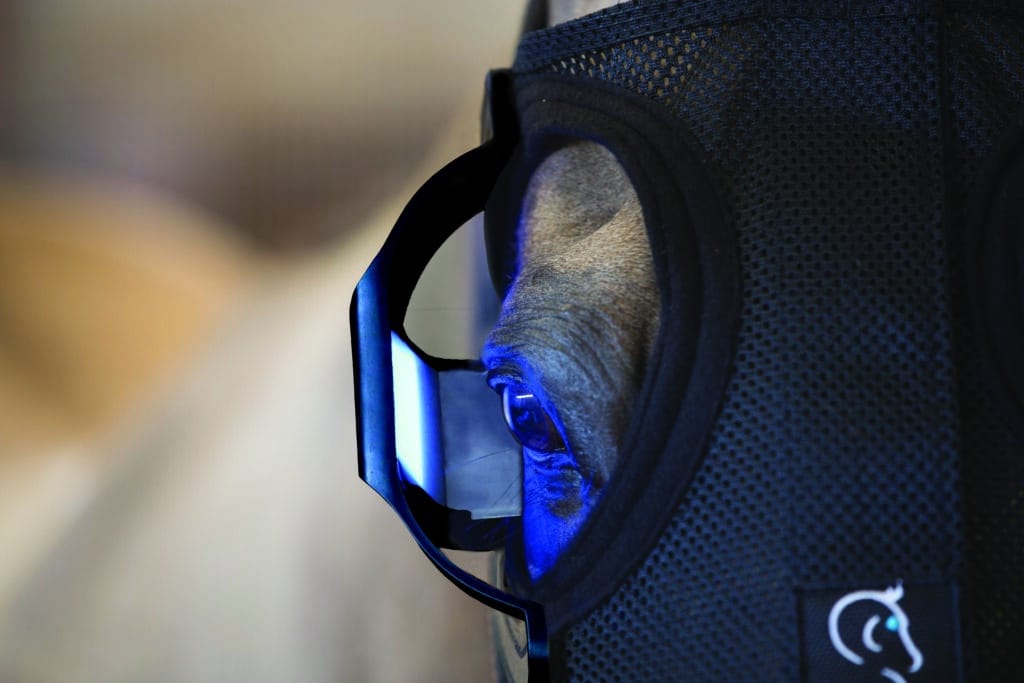
More than breeding: A foundation for health
Beyond breeding benefits, consistent daily exposure to blue light helps maintain overall health and well-being. By reinforcing the horse’s natural circadian rhythms, light becomes the most powerful cue in regulating your horse’s health.
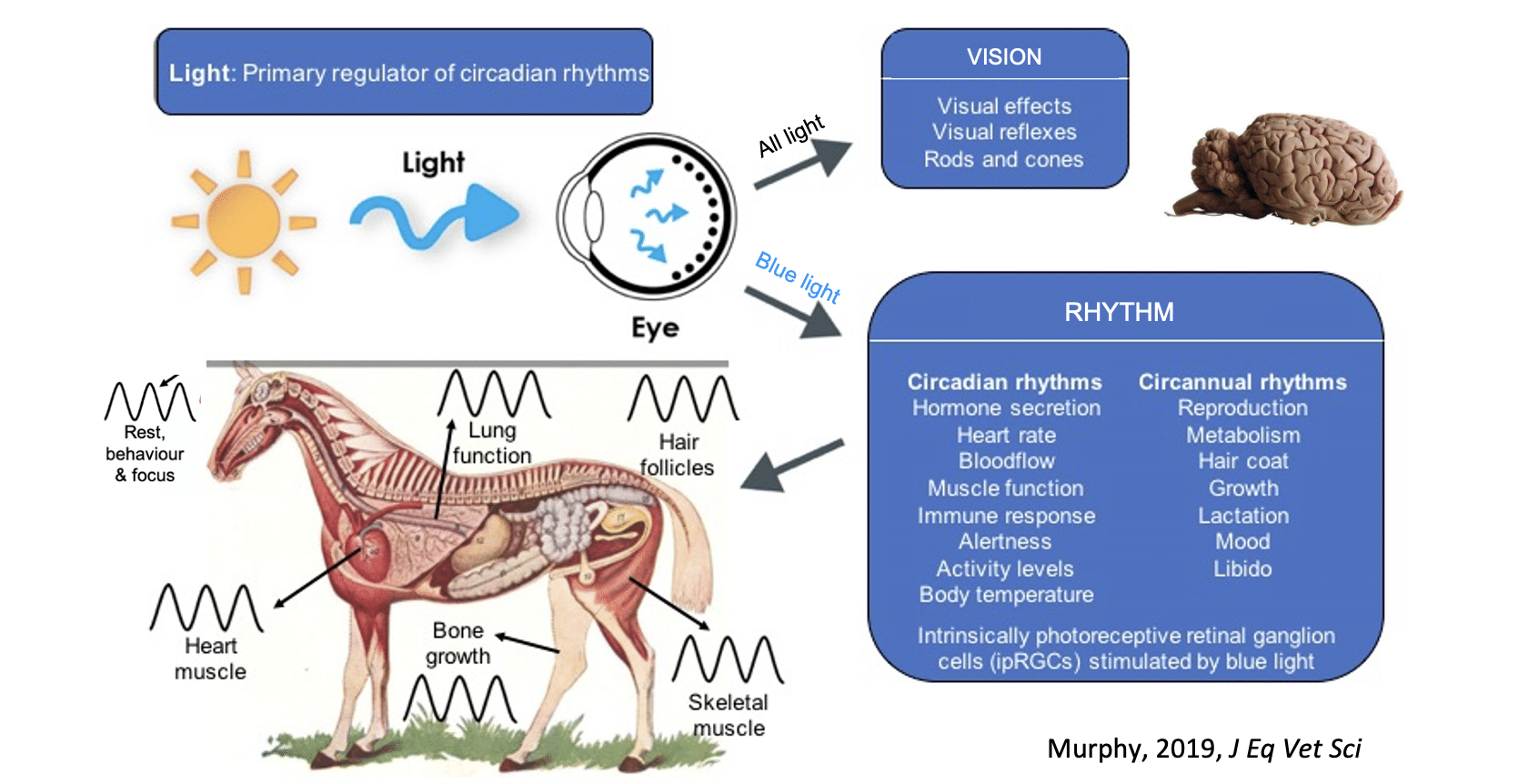
For more information on how to maximise your breeding performance by using Equilume, visit www.equilume.com or contact Amandine & Max directly amandine@equilume.com | max@equilume.com
This article was written in conjunction with Equilume.
